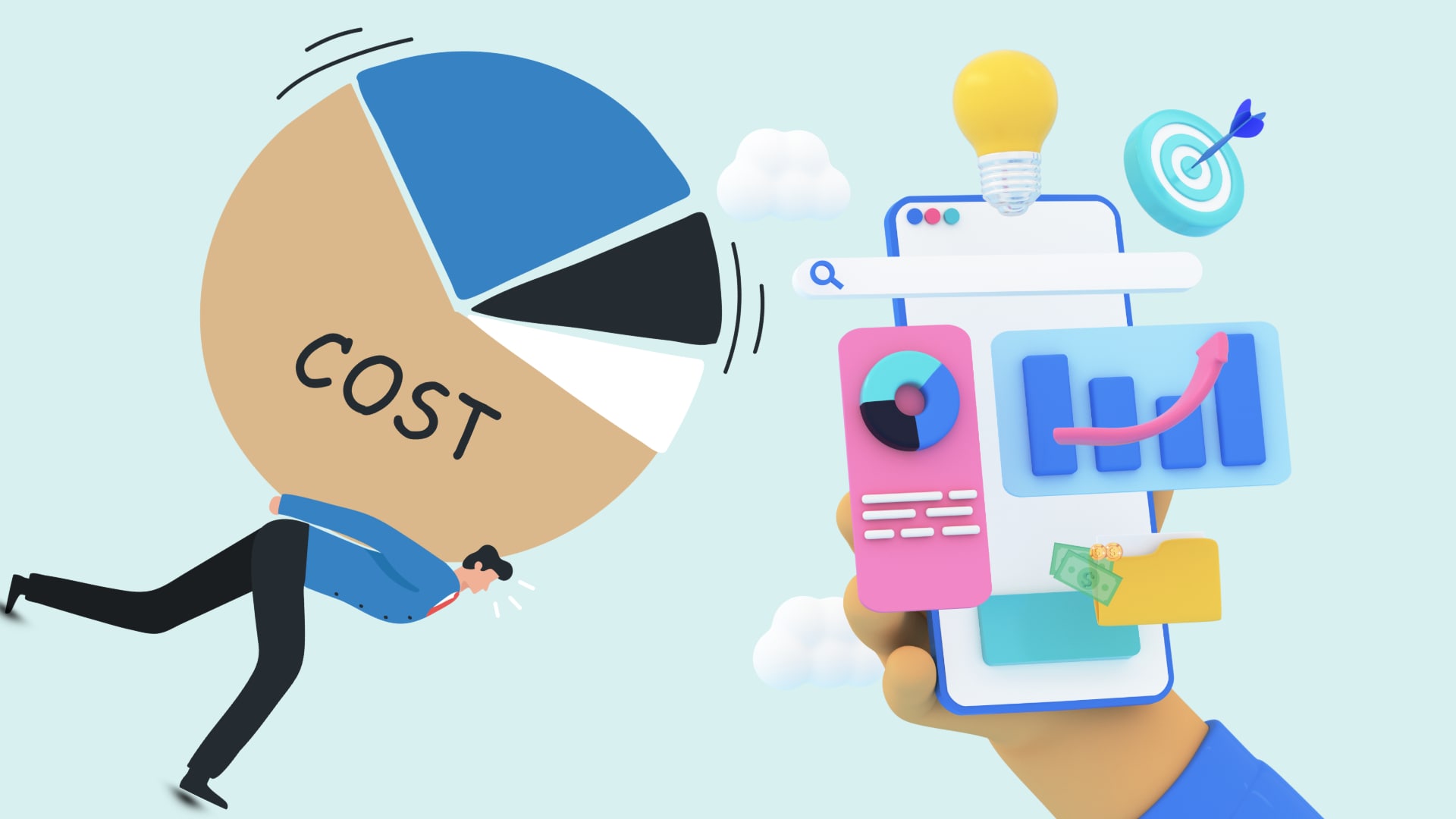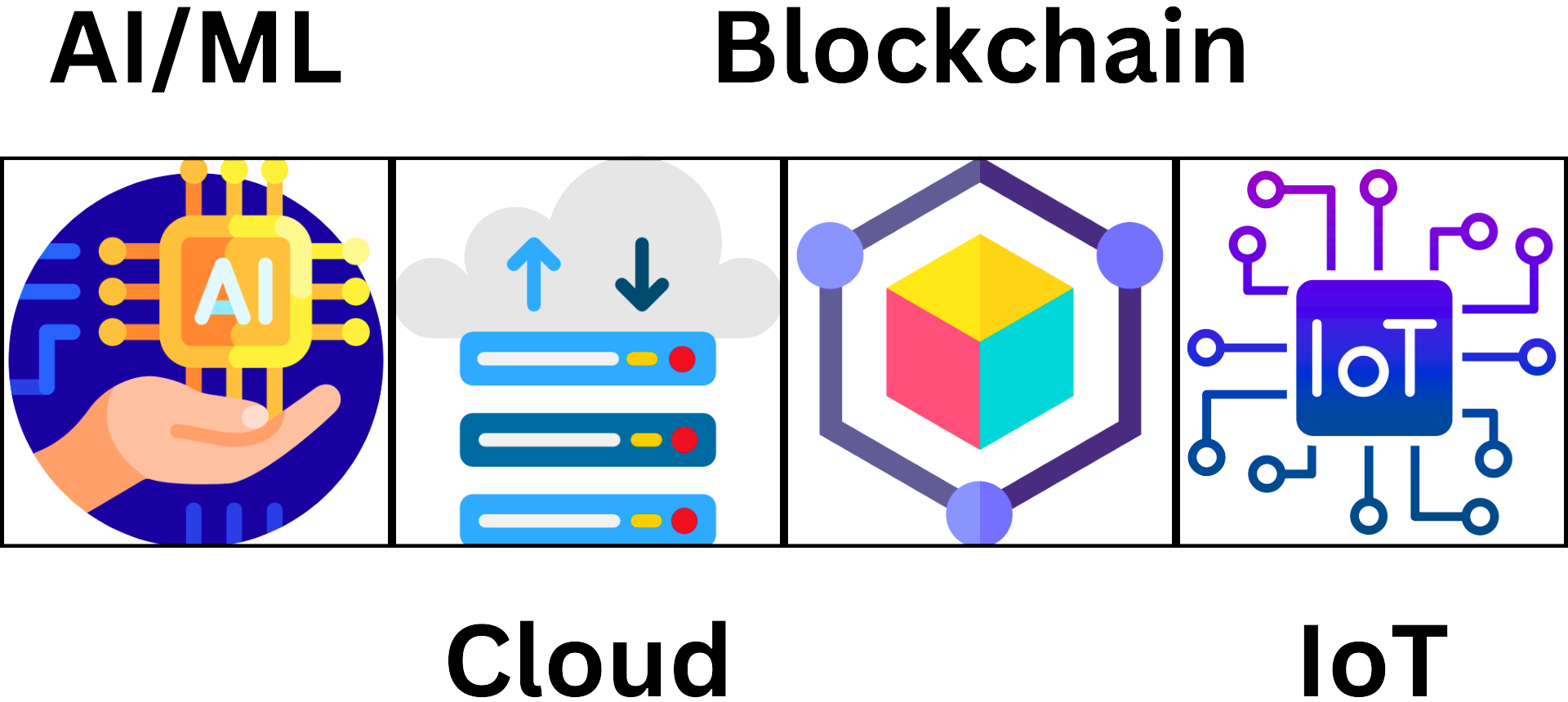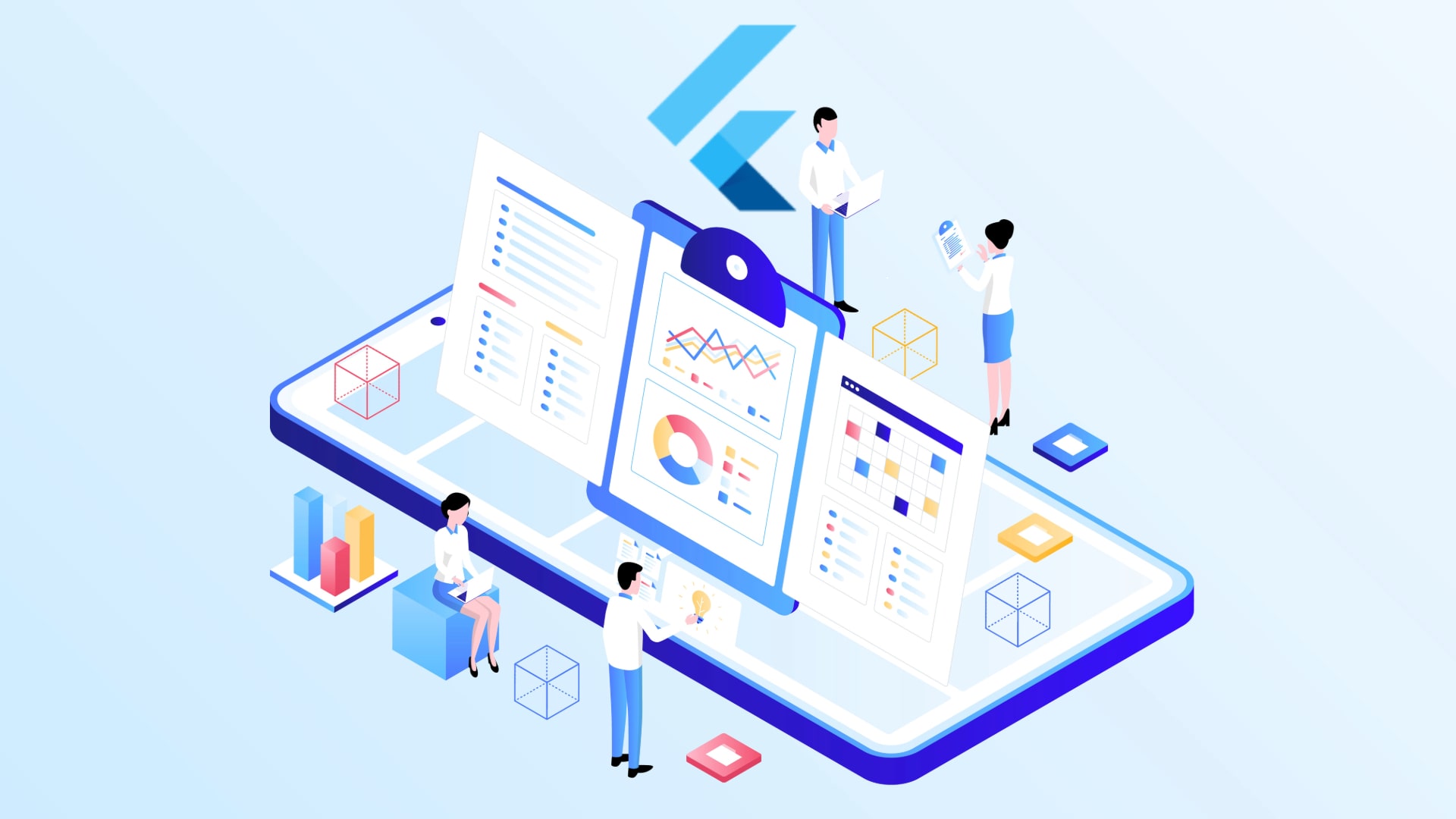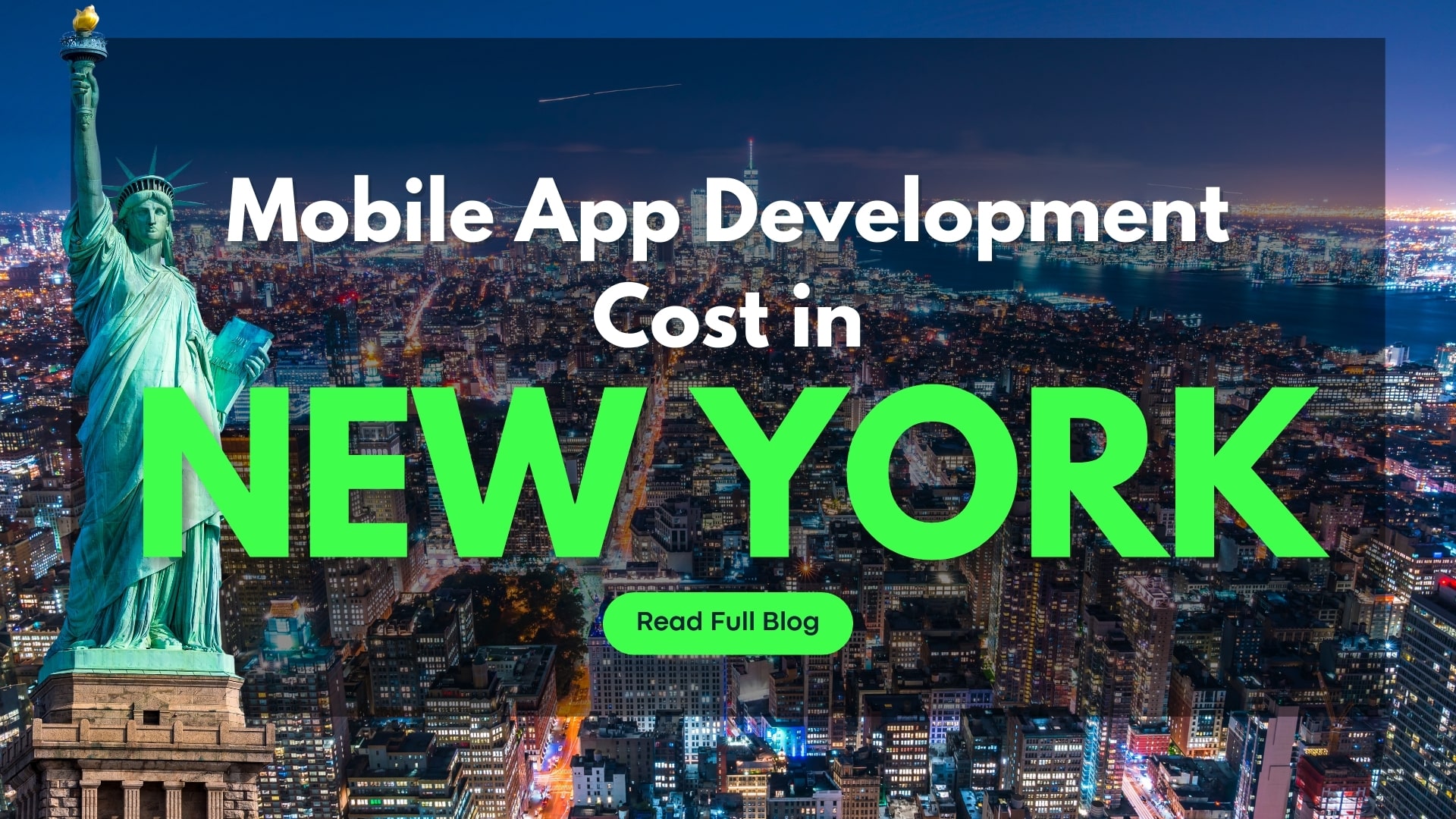How Much Does It Cost to Develop a Mobile App?
Thinking about creating a mobile app in 2025? You’re not alone! With technology growing fast, many businesses and individuals are bringing their ideas to life through apps. But one big question comes up: What is the cost of mobile application development? The price can vary a lot depending on the app’s features, design, and who built it. In this blog, we’ll explain what affects the cost, the latest trends, and how to plan your budget wisely.
Table of Contents
ToggleThe Global Market Size of Mobile Applications
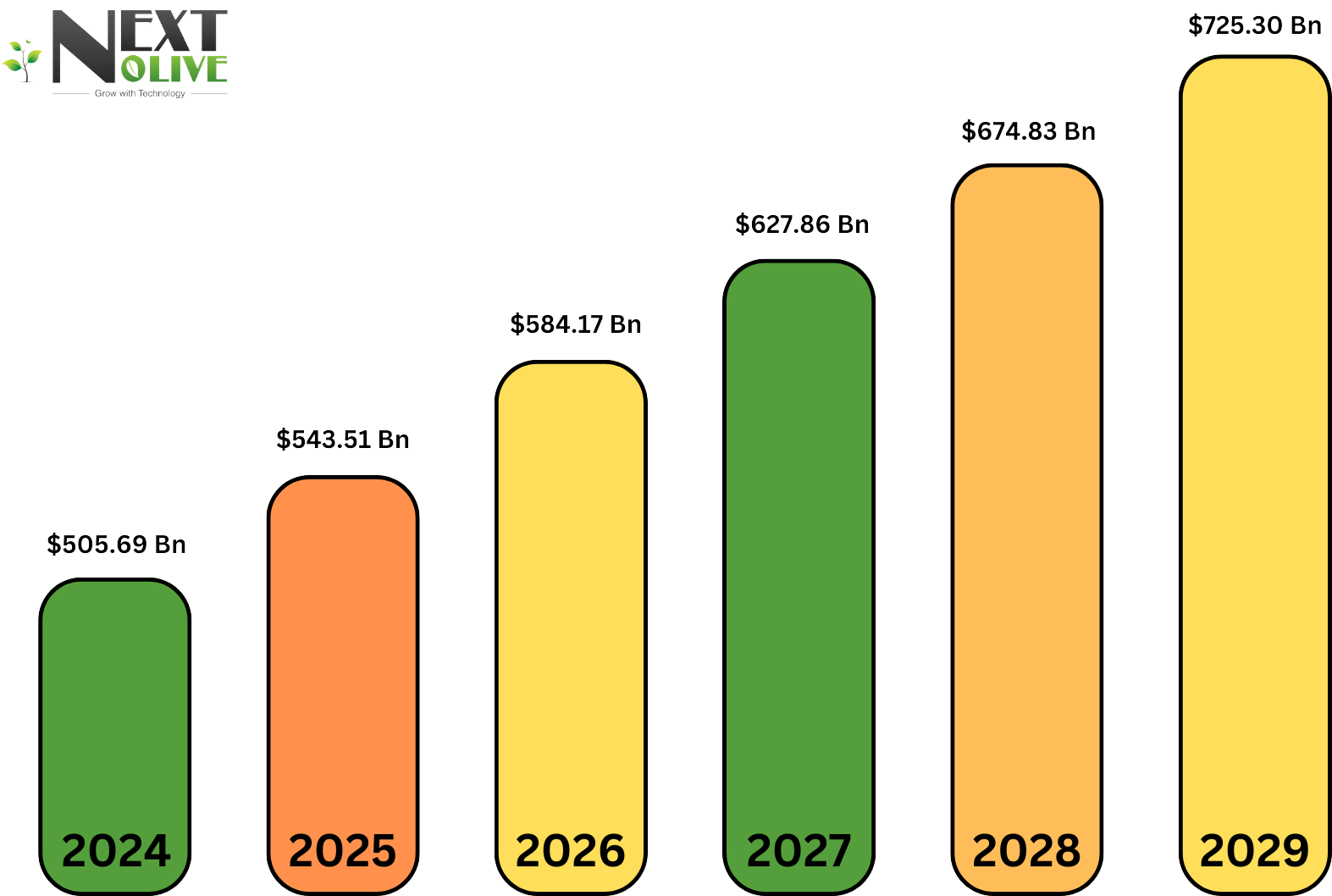
As per the report by Statista, the total app revenue globally was $505.69 billion in 2024. Total compound annual growth rates over this period remained constant and increased by 7.48%. The figure is forecasted to be $725.30 billion by 2029.
Mobile App Cost Development Based on the Type of App
[1] Simple Apps
Basic apps, such as to-do lists or calculators, are simple and require little backend functionality. The cost to develop such apps is low, usually between $5,000 and $20,000, depending on design and platform. Because they don’t need extensive functionalities, they have a faster development cycle. These are best suited for startups or companies that want an affordable web presence.
[2] On-Demand Apps
Apps like Uber or DoorDash need real-time monitoring, authentication of users, payment processes, and slick UI/UX. Development can cost anywhere from $30,000 to $150,000, depending on complexity and the ability to scale. Strong backend processes are also needed to support multiple users at a time. Features such as AI-driven suggestions or chatbots add extra expense.
[3] E-Commerce Apps
E-commerce applications, for example, Amazon or Shopify, require product catalogs, payment processing, user authentication, and stock management. The cost of development varies between $20,000 and $250,000, depending on features such as AI suggestions, AR try-ons, and multi-vendor management. Security and performance tuning are also essential to provide a seamless shopping experience. Maintenance expenses also pile up with periodic updates and feature additions.
[4] Social Media Apps
Social media platforms such as Facebook or Instagram necessitate advanced capabilities like live messaging, sharing of media, and user-centric feeds. These mobile apps range in cost from $50,000 to $300,000 on account of enterprise-level backend implementation, cloud infrastructure storage, and security of the data. Also impacting the price are ad-driven monetization as well as subscriptions. AI-fueled content filtering and recommender systems bring extra cost overruns.
[5] Fintech Apps
Fintech applications like investment, banking, and payment apps such as PayPal need top-notch security, financial regulations compliance, and encrypted transactions. Development varies from $50,000 to $400,000 based on features such as biometric verification, AI-based fraud prevention, and integration of blockchain. They have to go through intensive security checks and regulatory clearances, which increase the cost.
[6] Healthcare Apps
Medical apps, for example, telemedicine or fitness-tracking apps, need to be HIPAA or GDPR-compliant, data-encrypted, and offer real-time consultation capabilities. Their development price is between $40,000 and $300,000 based on integrations such as AI-based diagnostics, wearable device support, and scheduling appointments. Secure data storage and regulatory adherence heavily influence the cost and timeline.
[7] Gaming Apps
Gaming applications are diverse in complexity, ranging from basic 2D games to complex multiplayer games. Development costs may be anywhere from $10,000 to more than $500,000, depending on graphics, gameplay mechanics, AR/VR integration, and multiplayer features. High-end mobile games need sophisticated game engines, real-time physics simulation, and cloud gaming services, adding to the cost. Ongoing updates and in-app purchases are central to monetization.
Cost to Develop App Based on Technology Stack
[1] Native App Development
Native app development, where native apps are created specifically for iOS and Android, is more costly since it requires special developers and takes longer development cycles. Development costs range between $50,000 and $300,000 depending on app features, design, and complexity. Although costly, native apps deliver better performance, security, and user experience. Development takes more time as each platform requires its codebases to be maintained.
[2] Cross-Platform Development
Cross-platform development (using React Native or Flutter frameworks) is cost-reducing, enabling developers to code a single app for all platforms. The cost typically ranges between $40,000 and $200,000, depending on the design complexity and features of the app. Slightly less performing than native applications, cross-platform applications are a budget-friendly choice for companies willing to target iOS and Android consumers alike. Faster development is done, but optimizations can still require platform-specific modifications.
[3] Hybrid App Development
Hybrid apps, which are developed based on web technologies such as HTML, CSS, and JavaScript, are cheaper compared to native apps, costing between $30,000 and $150,000. They are executed within a web view and can be deployed on multiple platforms, thus developing them is faster. Hybrid apps, however, suffer from performance constraints, particularly for graphics-driven applications. They are suitable for content-driven apps but might not be the best for high-performance needs such as gaming or AR/VR.
[4] Backend and API Development
The backend plays a vital role in data storage, user authentication, and API integration, and the cost varies with how complex the system is. You can have a simple backend for $10,000 to $50,000, but a highly complex backend with real-time support and cloud integration may run over $100,000. It also varies based on whether you utilize third-party BaaS (Backend as a Service) or create a custom backend from the ground up. Robust and scalable backend development guarantees seamless app performance and data handling.
[5] UI/UX Design and Development
A well-crafted app interface improves user experience, interaction, and retention, so UI/UX design is an essential investment. The design cost varies with complexity and is between $5,000 and $50,000. Premium, bespoke animations, interactive features, and distinct branding drive prices up. Figma, Sketch, or Adobe XD are the typical tools used, and the workflow includes wireframing, prototyping, and several design cycles to get the final appearance and feel of the app right.
Cost of Developing an App Based on Complexity
[1] Simple App
A basic app with minimal features such as user login, simple UI, and minimal functionality can range from $5,000 to $40,000. Such apps usually have features such as contact forms, simple databases, or static content. With less development time (approximately 2-3 months), the cost is minimal. Suitable for startups or companies seeking a basic online presence.
[2] Medium-Sized Application
A medium-sized application with additional interactive elements, integrations (e.g., payment gateways or APIs), and a well-structured UI/UX might cost between $40,000 to $150,000. These applications take 4-9 months to build and need a team of developers, designers, and testers. Typical examples are e-commerce applications, social networking applications, or applications with real-time data synchronization.
[3] Large-Sized Application
A complex application with rich features such as AI integration, real-time messaging, cloud storage, and multi-platform compatibility may cost $150,000 to $500,000+. These applications take 9+ months to a few years to create and involve extensive backend design, security protocols, and regular updates. Some examples are enterprise-level solutions, high-traffic marketplaces, or worldwide social networking sites.
Effect of Next-Generation Tech on Mobile Development Cost
[1] AI/ML
Merging artificial intelligence and machine learning into mobile applications boosts personalization, automation, and predictive analytics at the cost of raising development expenses. Sophisticated algorithms need experienced developers, strong data processing capacity, and ongoing model training. Though high upfront expenses, AI-powered apps can enhance user engagement and productivity, resulting in cost savings over the long run. The secret to balancing costs and innovation lies in optimizing costs.
[2] Cloud
Mobile development through the cloud cuts infrastructure costs with its scalable computing power and storage. On the other hand, taking advantage of cloud providers such as AWS, Google Cloud, or Azure entails constant subscription and data transfer expenses. Paying-as-you-go maintains expense control, yet one has to maximize cloud utilization to save from unwarranted expenses. Cloud integration repays through instant updates, security features, and native cross-platform capability.
[3] Blockchain
Blockchain provides security, transparency, and decentralization to mobile applications, particularly in finance, supply chain, and identity verification. Its adoption, however, raises costs through intricate smart contract development, increased processing power, and transaction fees. Although initial investment is high, blockchain-based applications can minimize fraud and maximize trust, offering long-term value. Proper planning and selection of the appropriate blockchain framework can manage costs.
[4] IoT
IoT-powered mobile applications need sophisticated hardware integration, real-time data processing, and secure connections, resulting in increased development expenses. Developers need to incur strong backend systems, network protocols, and security features to manage huge device communication. Despite the cost, IoT increases automation, enhances efficiency, and facilitates emerging business models. Edge computing and optimized data management can reduce costs while maximizing IoT benefits.
Factors Influencing Mobile App Development Costs
[1] Hiring Model
[1] Project Handover to App Development Companies
Outsourcing the entire project to a mobile app development company provides end-to-end services from conception to release. Though this model ensures competency, quicker turnaround time, and well-defined processes, it typically comes with increased expenses because of the project management charge, overhead cost, and higher development quality. Yet, it mitigates risks and is a hassle-free affair, hence most suitable for enterprises that are looking for a turnkey service.
[2] Outsourcing to Offshore Teams
Offshoring to foreign development teams considerably reduces expenses with the added advantage of access to the world’s pool of talented workers. India, Ukraine, and the Philippines provide competent developers at affordable prices. However, pitfalls involve time zones, language, and quality differences. Proper screening and proper documentation assist companies in leveraging maximum cost savings without the trade-off in the quality of apps.
[3] Staff Augmentation
Staff augmentation enables companies to bring in outside developers who can collaborate with their internal staff, providing flexibility and economies of scale. This approach works best for the scaling up or down of resources according to the requirements of projects. Though it saves on recruitment overheads, it can sometimes involve extra management time and bringing in recruits to blend them into the current workflow.
[4] In-House Development Team
Creating an in-house development team grants full control of the app development process, which promotes improved collaboration and long-term stability. Yet, this model is associated with high expenses concerning salaries, benefits, infrastructure, and continuous training. It suits best companies that have ongoing app development requirements, providing a consistent team that aligns with the company’s vision and culture.
[5] Freelancers
The cheapest option is to hire freelancers, which is best suited for small projects and startups. Freelancers provide expertise and flexibility without the expense of full-time employment. Reliability, quality, and availability can be inconsistent, and coordinating several freelancers for various development areas can be complicated. A well-screened freelancer or a small team of dedicated individuals can provide a balance between cost and efficiency.
[2] Size of Development Team
[1] Small Teams (1-3 Members)
A modest development team of one single developer or a pair of experts who play multiple roles can be inexpensive, particularly for startups or simple applications with minimal features. With fewer wages that have to be paid, starting costs are minimal. However the process may be longer due to the shortage of workforce, and the absence of specialized expertise may lead to sacrifices in design, user experience, or performance optimization. Also, testing and debugging might take longer, possibly postponing the app launch.
[2] Mid-Sized Teams (5-10 Members)
A mid-sized team is a popular option for mobile app development, finding a balance between cost and effectiveness. A mid-sized team usually consists of specialized experts such as UI/UX designers, front-end and back-end developers, testers, and a project manager. Having dedicated experts working in parallel accelerates development enhances code quality, and guarantees comprehensive testing. Although the expenses are greater than for a small team, the reduced development time and enhanced app quality can offer greater long-term value.
[3] Large Teams (10+ Members)
For enterprise or business-level applications, a big team is required. It can encompass several developers dedicated to various platforms (iOS, Android, server-side systems), product managers, business analysts, DevOps, QA testers, and even marketers. Although such an approach massively accelerates the development process with high-quality feature implementation, it has higher salary costs, elevated infrastructure costs, and requires intense project management so as not to waste resources. Large groups need careful management to make sure that they communicate and flow smoothly, lest mismanagement would cause delays and cost overruns.
[3] Technology Stack
{1} Programming Languages and Frameworks
The selection of programming languages and frameworks greatly influences the cost of mobile app development. Native development with Swift (iOS) and Kotlin (Android) tends to incur independent codebases, which drive up time and costs. Cross-platform frameworks such as Flutter or React Native minimize costs by allowing a single codebase for both platforms. Still, performance and feature-specific constraints could necessitate native coding, influencing overall budgetary allocation.
{2} Backend Technology
The backend is the backbone of the app, handling data, user authentication, and server interaction. The use of scalable technologies such as Node.js, Django, or Firebase impacts development costs according to infrastructure complexity. A custom backend can necessitate specialized developers and increased maintenance, while Backend-as-a-Service (BaaS) solutions such as Firebase provide cost-efficient alternatives with managed services. It all depends on scalability requirements and budget.
{3} Third-Party Integrations
Integrating third-party services such as payment gateways, analytics software, or social media authentication affects cost and development time. While APIs from Stripe, Google Maps, or Twilio simplify functionality, they usually have subscription charges or usage-based pricing. Sophisticated integrations require extra coding and testing, affecting initial and ongoing costs. Selecting cost-effective APIs that suit business requirements allows expenses to be effectively managed.
{4} Cloud Services and Hosting
Cloud infrastructure has a direct impact on app performance and the cost of operations. Hosting services such as AWS, Google Cloud, and Microsoft Azure are scalable but have differing costs concerning storage, processing capabilities, and traffic levels. Serverless architecture helps minimize costs for start-ups, but dedicated cloud servers can be critical for business-scale apps. The choice of hosting model helps avoid unnecessary costs while maintaining performance.
{5] App Features and Customization
The intricateness of application features and the amount of customization tend to influence cost significantly. Simpler apps that use common UI elements are cheap, while intensive apps with large interactions, artificial intelligence, or augmented reality use need sophisticated expertise and resources. Custom animations, real-time synchronizations, and security features raise the cost factor. Focusing on core functionality and scaling upward can optimize spending without compromising capability.
[4] Selection of the Platform
{1} Android
Creating a mobile application for Android tends to be more expensive because testing is required on a broad variety of devices, screen resolutions, and OS levels. Since the platform’s open nature implies support for multiple manufacturers and custom Android skins, developers have to support these as well, adding to the development time and costs. At least, the lower app submission fees at Google Play and the more lenient approval process ease some of these expenses. Also, supporting an Android application will demand constant optimization because of the constant update of the OS and device fragmentation.
{2} iOS
iOS development is overall less complex and economical because Apple hardware comes with only a limited amount of screen resolutions and variations in hardware. Still, high app store restrictions on the part of Apple and higher developer account fees can make costs higher. The use of Swift, which is the central development language of iOS, for faster development makes costs efficient. Employing senior iOS developers may still be expensive. Additionally, the strict application approval process at Apple can create extended approval timelines that may also enhance the final price tag.
{3] Cross-Platform
Cross-platform development with tools such as Flutter or React Native can be cost-effective as it enables one codebase to execute on both iOS and Android. It significantly reduces development time and resource investment as opposed to developing native apps separately. Still, performance and customization constraints can mean extra effort in making the app optimized for each platform, which might prove to be more expensive in the long term. Although it provides an affordable upfront investment, intricate features or platform-specific features might still need native coding, which will increase maintenance costs.
[5] Legal Compliance
{1} Data Privacy and Security Laws
Maintaining data privacy law compliance such as GDPR and CCPA plays a big role in influencing mobile app development costs. The developer needs to adopt strong encryption, secure authentication, and mechanisms to protect user data, all of which cost extra time and resources. Being non-compliant risks imposing high fines and lawsuits, hence upfront investment in legal infrastructures is important. Conducting frequent audits and periodic compliance upgrades also adds to long-term expenses.
{2} Accessibility Requirements
Compliance with disability laws, for example, the Americans with Disabilities Act (ADA) and Web Content Accessibility Guidelines (WCAG), adds development costs. Support for screen readers, text-to-speech functionality, and adjustable UI components need dedicated coding and quality assurance. Not complying with accessibility guidelines can lead to lawsuits and lost customers, so investing early is cost-efficient. Accessible design not only fulfills the legal requirements but also increases the user base of the app.
{3} Intellectual Property Laws
Adhering to intellectual property (IP) regulations influences costs through the need for legal research, licensing costs, or the creation of original content. Developers have to be careful not to violate trademarks, copyrights, or patents, which can involve the employment of legal professionals. Obtaining patents or copyrights for original app elements also contributes to the cost. Disregarding IP laws can result in expensive lawsuits and mandatory app revisions, so following them is a significant investment.
{4} Industry-Specific Regulations
Healthcare, finance, or education apps need to adhere to rigorous regulations such as HIPAA (healthcare) or PCI DSS (payment card industry data security standard). Compliance requires sophisticated security features, heavy documentation, and expert development skills, driving up costs. Certification procedures and third-party audits also contribute to costs. Yet, adherence to these regulations generates user trust and prevents catastrophic financial penalties for non-compliance.
{5} Consumer Protection Laws
Consumer protection laws against fraud, deceptive advertising, and discriminatory pricing are another complication in app development. Developers have to guarantee plain terms of service, honest billing, and honest data use, sometimes necessitating legal advice. Compliance can also entail refund procedures, conflict resolution systems, and safe payment methods. Non-compliance can result in lawsuits, reputational harm, and loss of revenue, so legal compliance is an investment worth making.
Some Hidden Mobile Application Development Costs to Consider
[1] Third-Party Integrations
Although third-party APIs can accelerate development, they tend to have unforeseen expenses such as subscription charges, usage caps, and paid upgrades. In the long run, scaling your app might mean upgrading to higher-cost plans or even changing providers, which means more money.
[2] Maintenance and Updates
Creating an app is not a one-time investment, there needs to be periodic updating to patch bugs, enhance performance, and remain compatible with newer OS releases. Unforeseen problems and changing user expectations can also contribute to long-term maintenance expenses.
[3] Cloud Storage and Hosting
If your app deals with a high volume of data, the costs of cloud storage and hosting can mount very fast. Costs vary based on data transfer, server capacity, and security features, which will increase as your user base expands.
[4] Compliance and Security
Compliance with industry regulations (such as GDPR, HIPAA, or PCI-DSS) involves ongoing investment in security measures, audits, and legal compliance. Disregarding these can result in fines, reputational loss, or expensive legal battles in the future.
[5] Marketing and User Acquisition Costs
A fantastic app does not do much good if nobody knows it exists. All paid advertising, influencer marketing, ASO (App Store Optimization), and referral programs are budget-heavy, and gaining users tends to be more expensive than keeping them.
[6] Cross-Platform Compatibility Adjustments
Even with cross-platform tools such as Flutter or React Native, platform-specific optimizations can still be required for best performance. Variations in UI/UX standards, hardware support, and OS releases can cause extra development time and expense.
[7] Post-Launch Customer Support
Toll-free customer care by chat, email, or call centers involves committed resources. If done in-house or outsourced, it is essential to maintain high-quality service for retaining users but includes adding to continuous operational costs.
Tips for Optimizing Mobile App Development Charges
[1] Define Clear Requirements from the Start
Ambiguous requirements cause scope creep and added expenses. Define your app’s purpose, target market, and main functionalities before development. A clear roadmap reduces unnecessary revisions and keeps the project on budget.
[2] Prioritize Essential Features with an MVP Approach
Rather than launching a full-fledged app full of features right from day one, launch with a Minimum Viable Product (MVP) and begin with core functions providing value to consumers, solicit feedback, and incrementally evolve it based on real-world use, conserving both time and expense.
[3] Choose the Right Development Approach
Choose native, hybrid, or cross-platform development depending on your budget and objectives. Native apps perform better but are more expensive, whereas hybrid and cross-platform approaches (such as Flutter or React Native) help save money while targeting multiple platforms.
[4] Leverage Open-Source Tools and Pre-Built Solutions
Utilizing open-source frameworks, libraries, and APIs can reduce development time and costs to a great extent. Rather than writing everything from scratch, use stable pre-existing solutions for authentication, payments, and UI components.
[5] Optimize UI/UX Design
A carefully considered UI/UX minimizes expensive redesigns and maximizes user retention. Maintain a simple, intuitive, and user-expectation-consistent design to limit unnecessary iterations and provide a smooth user experience.
[6] Plan for Scalable Cloud Solutions
Running your app on scalable cloud platforms (AWS, Google Cloud, or Azure) means paying only for what you use. Don’t spend money on costly infrastructure upfront, use cloud platforms that scale as your app grows.
[7] Conduct Thorough Testing Early On
Bug fixing after launch can be costly and injurious to user experience. Conduct extensive testing at every phase, functional, performance, and security testing, to detect and fix bugs early, keeping long-term maintenance costs low.
Follow a step-by-step Mobile App Development Process

Step 1: Feasibility Analysis and Requirement Gathering
Before embarking on development, it’s important to determine if the app concept is feasible. This includes market analysis, competitor analysis, and technical feasibility reports. Developers and stakeholders work together to establish app features, user requirements, and project scope. Clear documentation helps everyone be on the same page before proceeding.
Step 2: Designing and Planning
A good app begins with a solid design and strategy. UI/UX designers design wireframes and prototypes, prioritizing user experience and interface looks. Developers and project managers map out the technology stack, development plan, and schedules. This is the foundation for a seamless development process.
Step 3: Development and Coding
This is where the application begins to take shape. Clean, scalable code is written by developers, merging front-end and back-end features. Agile practices and iterative development guarantee constant refinements. Frequent builds and code reviews ensure quality and efficiency.
Step 4: QA Testing and Debugging
No app is flawless without proper testing. Functional, performance, and security testing are conducted by QA engineers to detect bugs and ensure smooth performance. User feedback and real-world experience allow the app to be fine-tuned. Debugging at this point avoids issues after launch.
Step 5: Deployment and Launching
After the app is refined, it’s time for the grand launch. Deployment is the process of installing servers, submitting the app to app stores, and meeting platform guidelines. A well-executed rollout, along with marketing, maximizes user adoption and visibility.
Step 6: Maintenance and Support
After the launch, the journey goes on with frequent updates, performance tracking, and support to users. Bug fixing, feature optimization, and responding to user feedback make the app timely. Ongoing development ensures sustained user interest and long-term success.
What to Consider While Selecting a Mobile Application Development Company?

Selection of the right mobile app development company can make or break your project. With thousands of options to choose from, it is always important to highlight the key features such as experience, reliability, and customer service. Next Olive Technologies is the best mobile application development company that provides its services in over 20 countries and has 200+ talented developers with competitive mobile app dev costs. Let’s discuss a few things that you should consider when choosing a development partner:
[1] Customer-Centric Approach
Select a mobile app development company that makes your needs the priority and cares about your vision. A customer-oriented company will closely listen to your needs, provide solutions that suit you, and ensure that the final product achieves your business objectives. Select a company that holds user experience important and incorporates feedback along the development journey. The flexibility to match your changing requirements is an excellent determinant of the level of care for the client.
[2] On-Time Delivery of the Projects
Punctual delivery is important to keep your business pace intact and fulfill market needs. A good app development company has a well-organized schedule, maintains clear milestones, and delivers smoothly without sacrificing quality. Observe their previous record, customer reviews, and project management processes to determine their efficiency. Unpunctuality comes at a cost, so choose a team with high respect for time and responsibility.
[3] Experienced App Developers
The developers’ expertise plays a major role in the app’s quality and functionality. Seasoned experts bring industry experience, technical skills, and creative problem-solving abilities to the project. Check their portfolio to evaluate their previous work, tech stack, and capability to manage complex functionalities. A good team will not only develop an app but also make it performance-optimized, scalable, and future-proof.
[4] Post-Launch Support
App development doesn’t stop with release; ongoing maintenance, updates, and bug fixes are required. Opt for a company with robust post-launch services such as troubleshooting, feature improvements, and security patches. This helps ensure that your app is working, competitive, and attuned to changing user needs. Having a long-term association with a cooperative development team will help save time and money down the road.
[5] Open Communication with Client
Clear and open communication supports an easy development process and avoids confusion. A reputable app development company keeps you updated at each step, appreciates your suggestions, and shares frequent progress reports. Make sure they employ effective communication tools, remain responsive, and support joint decision-making. Trust is built with clear communication, and the final product turns out as you envisioned.
Conclusion
As we enter 2025, the price of mobile app development is still determined by such factors as complexity, platform selection, design complexity, and new technologies such as AI, blockchain, and AR/VR. While a basic app can begin at a few thousand dollars, rich-feature, and enterprise-grade apps can run well into six figures. The solution to budgeting optimization is honest planning, opting for the ideal development method (native, hybrid, or no-code), and collaborating with pros. Spending on a solid-built app is more than an affordable expense, it’s a calculated decision that will develop your business, attract more clients, and win their hearts through engagement. Through the ongoing march of technology, keeping updated about pricing, techniques, and expertise will allow your business to become wiser about making better-informed choices while getting the full potential from their app.
Frequently Asked Questions
What factors influence the cost to develop an app in 2025?
The cost of developing an application in 2025 involves various critical factors, such as the complexity of the app, the platform that the app works on (iOS, Android, or both), the features and functionalities of the application, and the location and expertise of the app development company. Further costs include design, testing, and post-launch maintenance pack.
Which is the best mobile app development company near me?
Next Olive Technologies is the leading mobile app development firm with over 200 developers and with over 13 years of expertise. The company serves different industries in major cities of the USA, such as New York, Seattle, New York, etc. and over 20 countries, such as the USA, the UK, Germany, Saudi Arabia, Australia, UAE, etc.
How much does an app development company typically charge for app development in 2025?
The cost to build an app can vary depending on the developer, the type of application that you need to develop, and the geographical location. For instance, developers in the USA charge more in 2025 than developers in Eastern Europe or India, for instance, due to differences in their hourly rates, anywhere from $25 to $250+ per hour.
Is low-cost mobile app development a good option in 2025?
Yes, the cost of developing mobile applications is low, but they often come with fewer features, simpler designs, and perhaps less comprehensive support. If a startup is a smaller business, then it is not always a good idea to build a low-cost mobile app, but it might be right for them, but their focus on long-term scalability and quality must be considered as well.
What is the average cost of developing an app for Android and iOS?
Depending on whether the app for Android and iOS is being developed to be used on a single platform or both, one needs to budget for them differently. A simple application to one platform can vary in cost from $15,000 to $50,000; to an application designed to operate both Android and iOS, the developers might cost more, owing to much as $40,000 to $150,000 or more as required by its features.
What is the typical cost to create an app with advanced functionalities like AI or ML?
The cost to build an app with advanced features like AI, AR, or complex data integration is much higher. The development cost can range between $50,000 to over $200,000, depending on the complexity. The development time also increases since the implementation of these kinds of features is complex.
How do website and app development costs compare?
The cost of website and app development may vary because the nature of both is quite different. A website is typically a simpler project that takes less to make, whereas an app takes work for app stores, native functionality, and platform-specific optimizations. Website development may range from $5,000 to $15,000, while mobile apps start at $10,000 and go easily upward with complexity.
What is the cost for Android app development in 2025?
The price of developing Android apps would differ according to the app's scope and features. For instance, a medium Android app will cost anywhere from $15,000 to $50,000, but with integrations and additional features, such as a complete Android app will reach $50,000 to $150,000 or higher in the year 2025.
How much does fintech app development cost in 2025?
Fintech development cost is more significant as the application involves robust security, regulatory compliance, and financial integrations. The cost to develop the most basic fintech app that can be released on Android and iOS costs $100,000. For an advanced version, which includes cryptocurrency support, AI, and banking integrations can easily run over $200,000.
What are the options for low-cost app development in 2025?
The options to develop an app at a low cost include outsourcing to countries with lower labor costs, selecting a simpler design for the app, reducing the number of features for the initial launch, or using app builders and templates for simple apps. However, cost savings should be balanced with quality, as cutting corners will negatively impact user experience.

